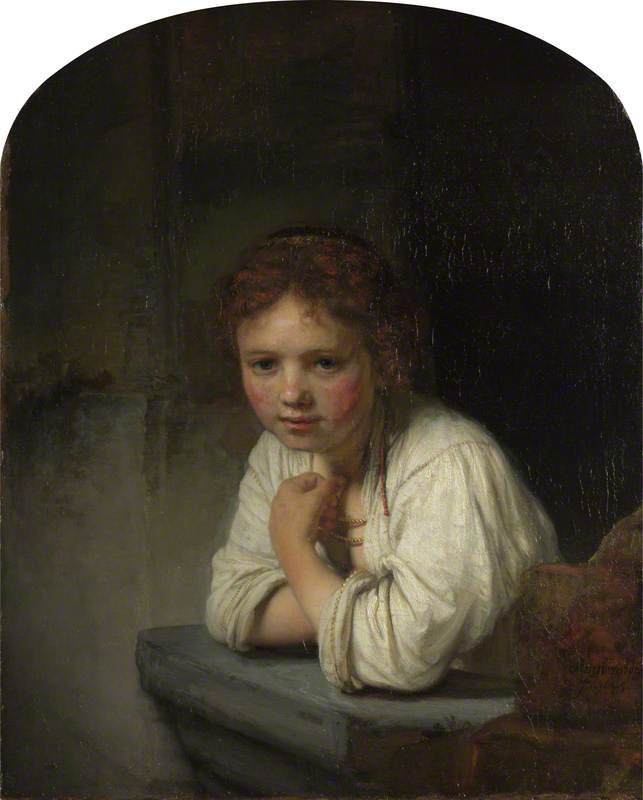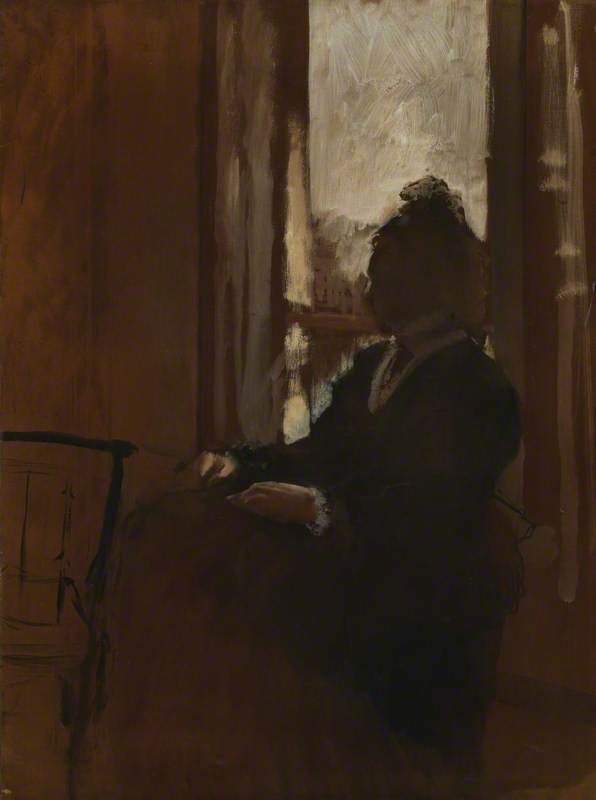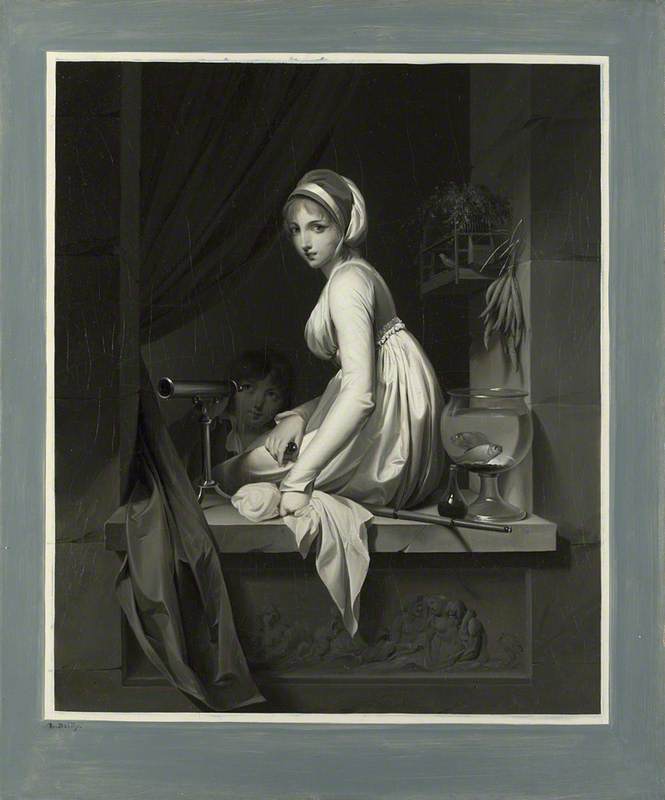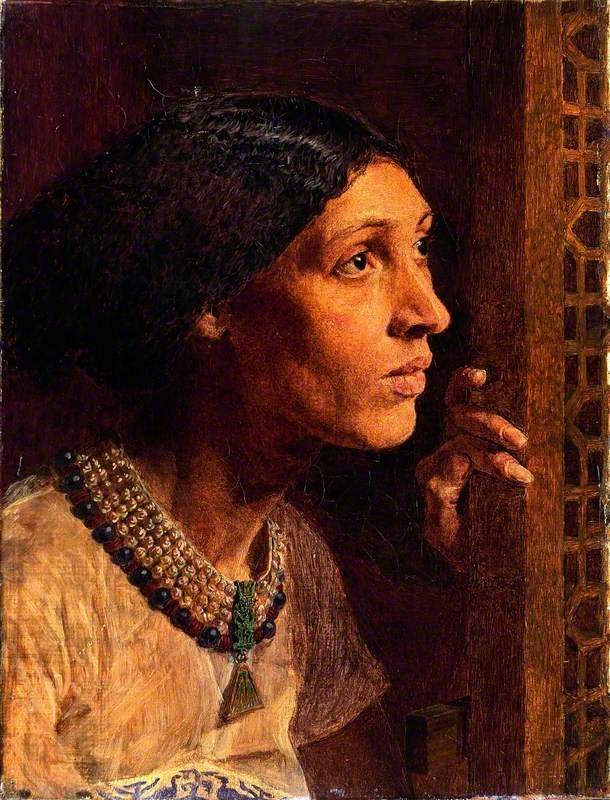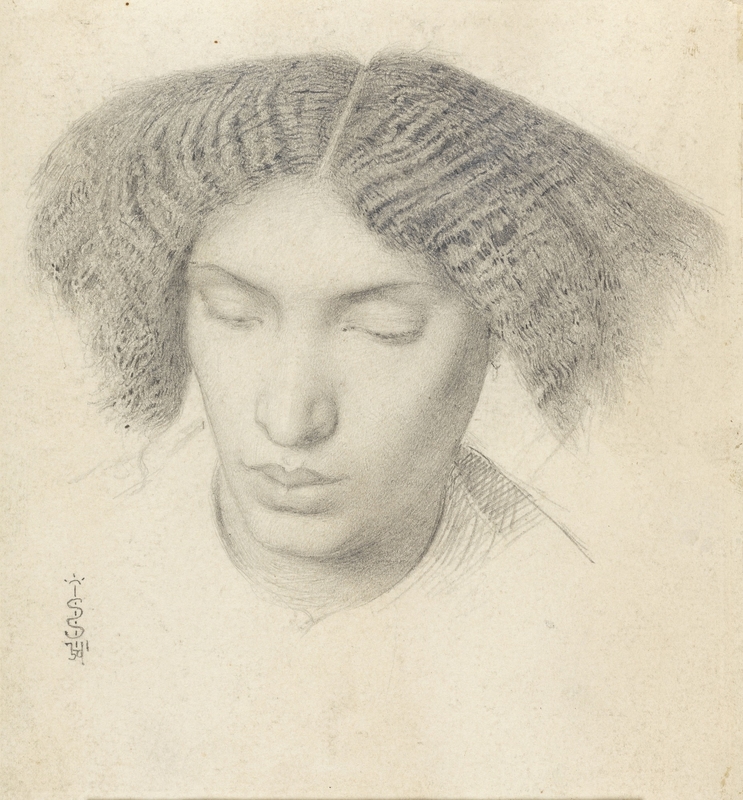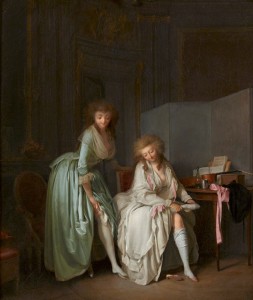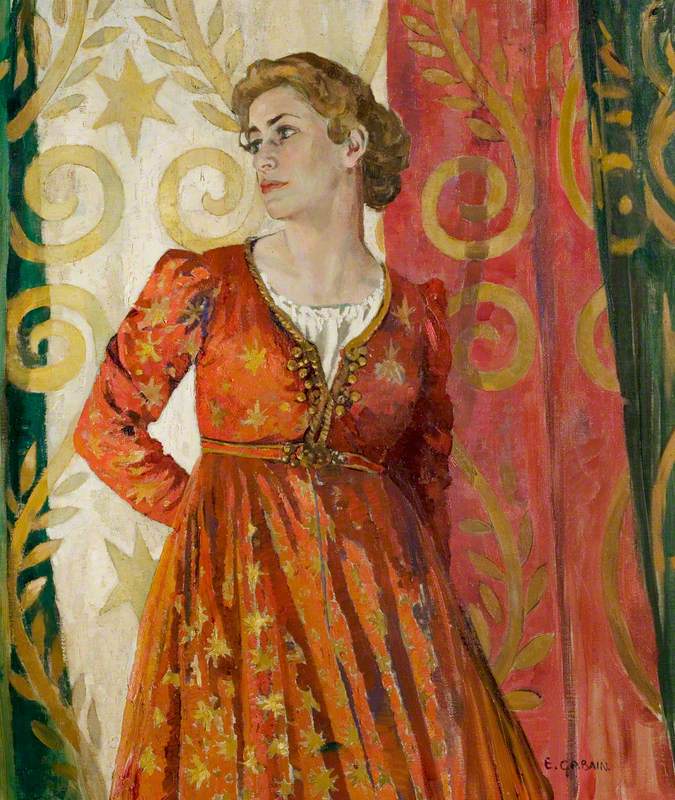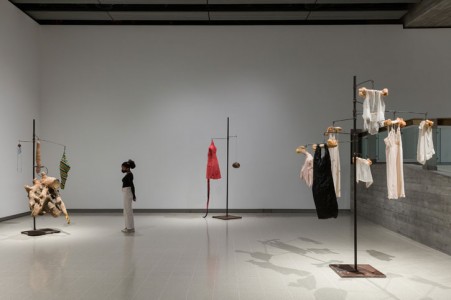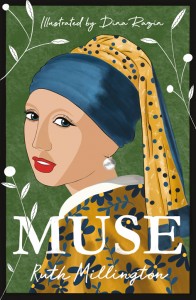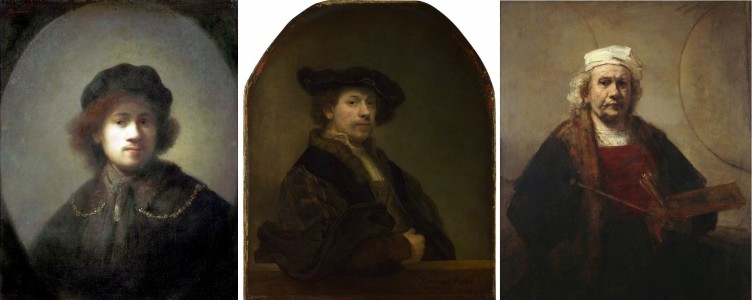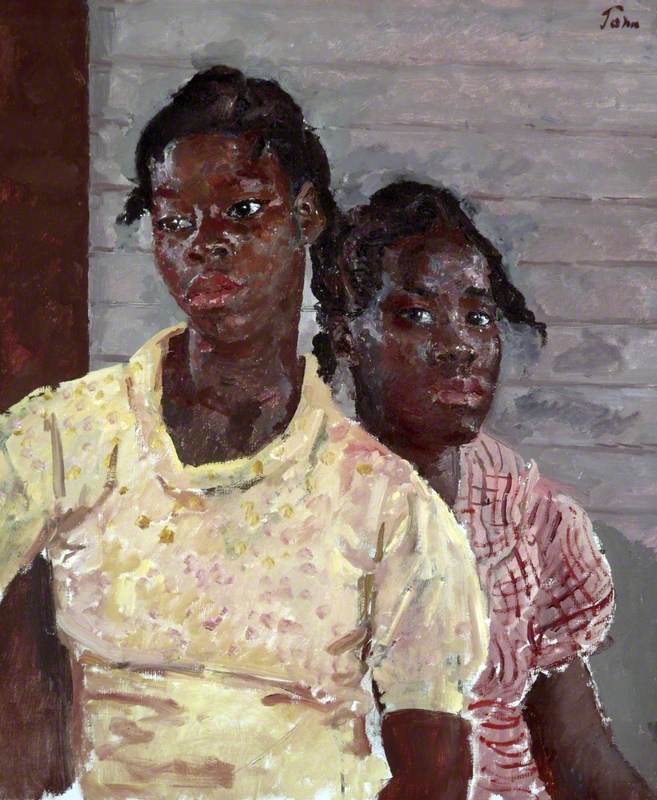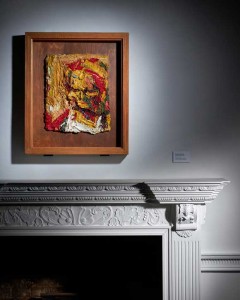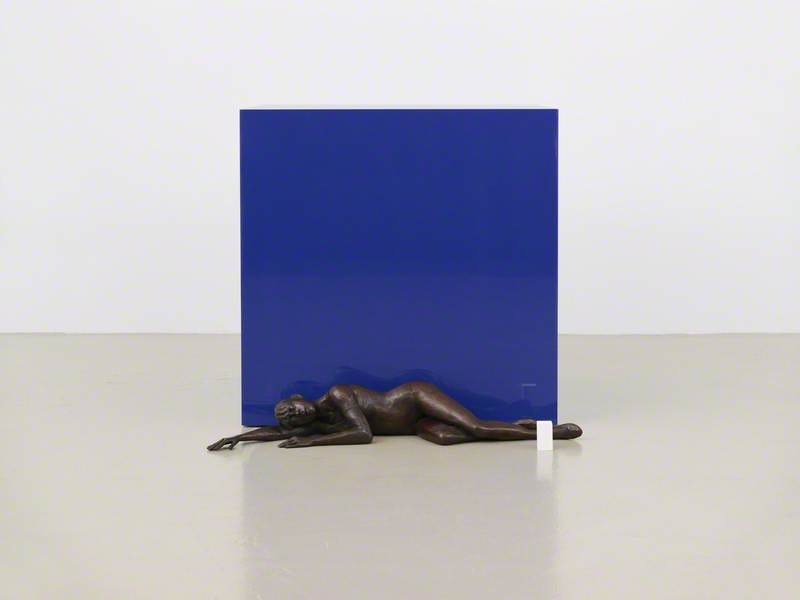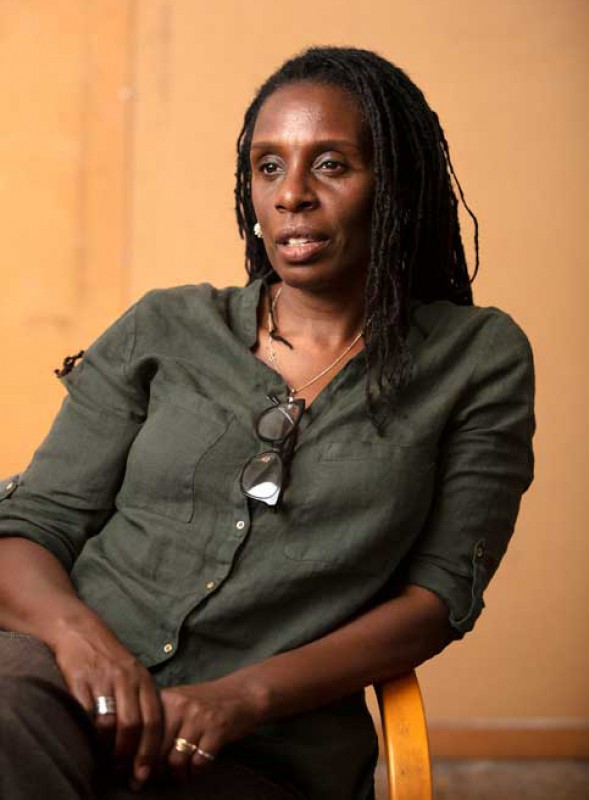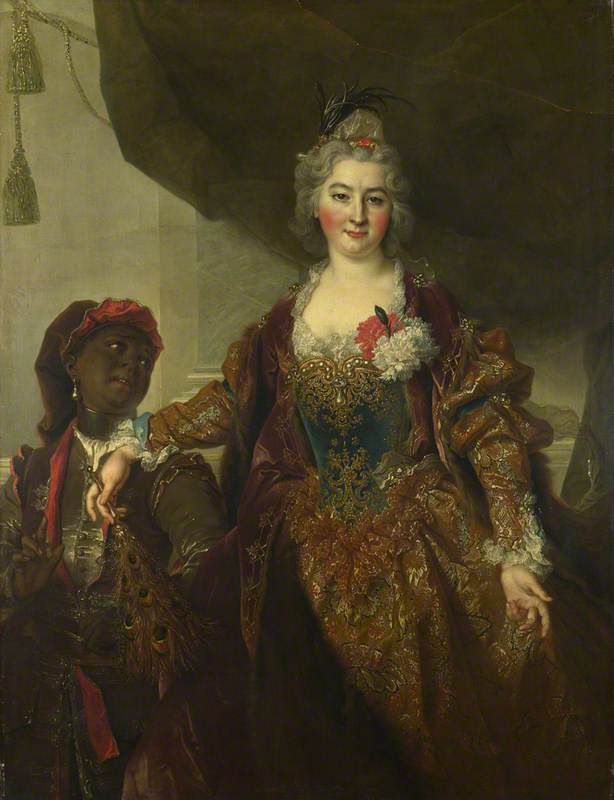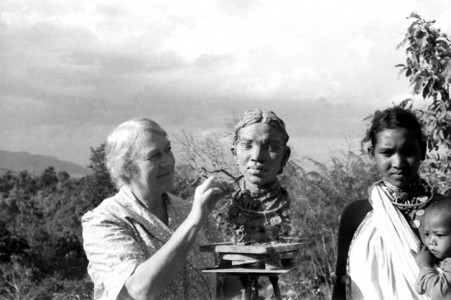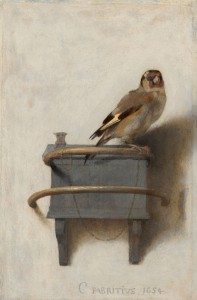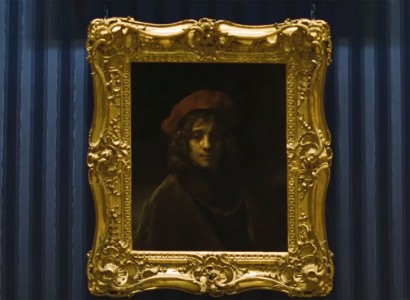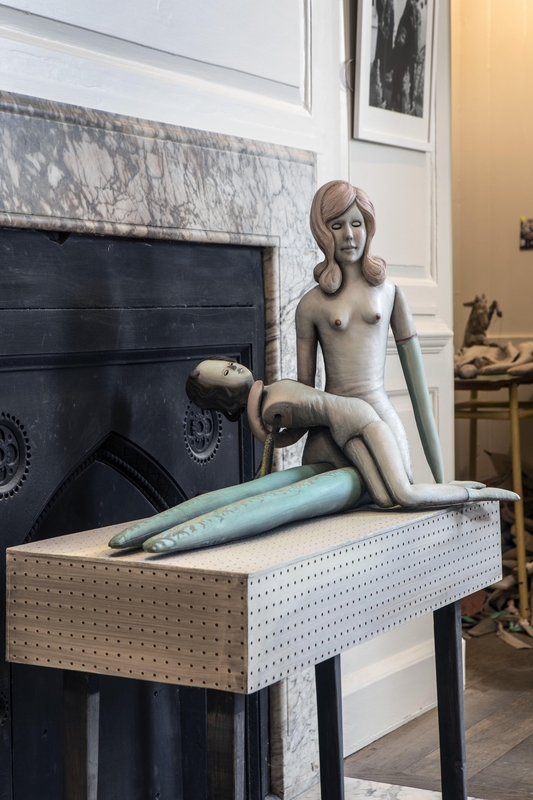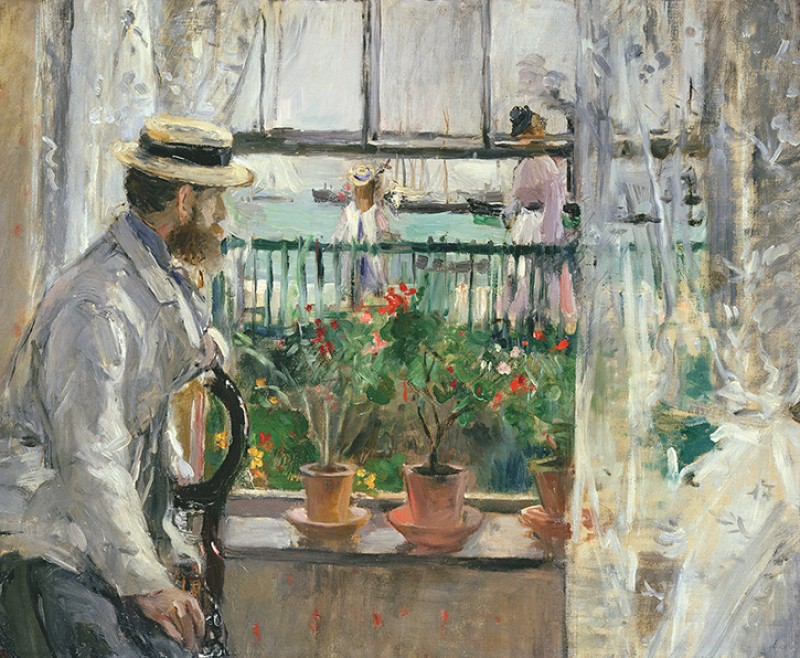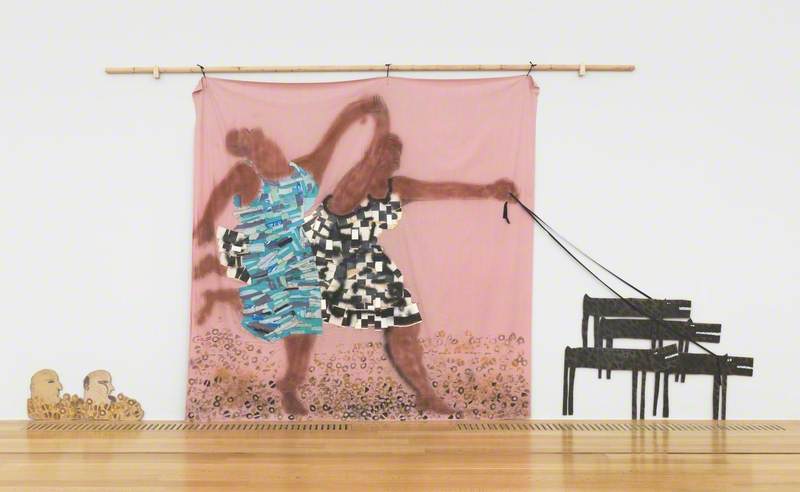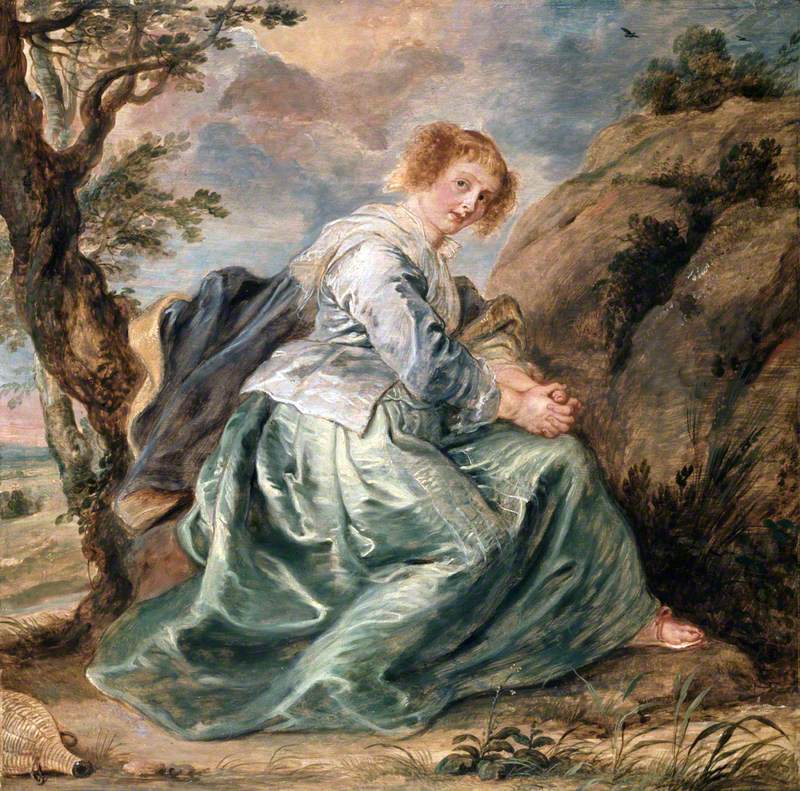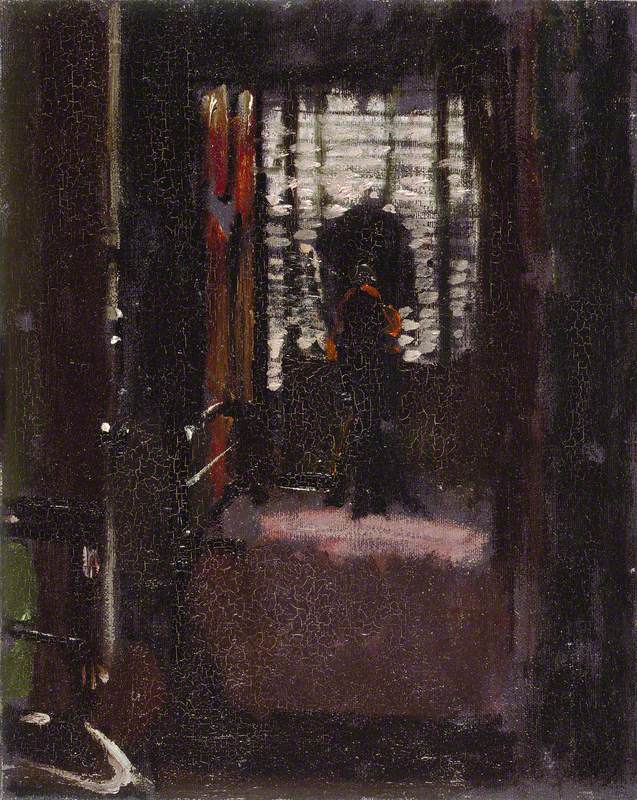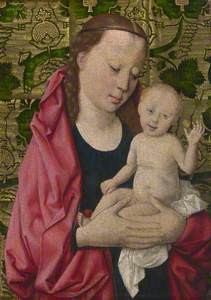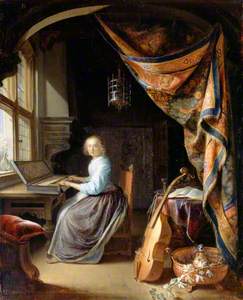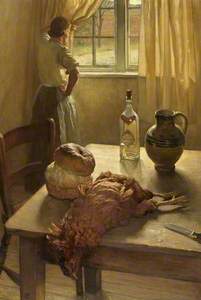Inspired by Dulwich Picture Gallery's own collection, specifically the Rembrandt painting Girl at a Window, the exhibition 'Reframed: The Woman in the Window' is unique in that it is the first to consider the enigmatic motif of its title, in a variety of artistic representations and mediums.
Woman Reading Possession Order (from the series 'Persons Unknown')
1997, Cibachrome print mounted on board by Tom Hunter (b.1965) 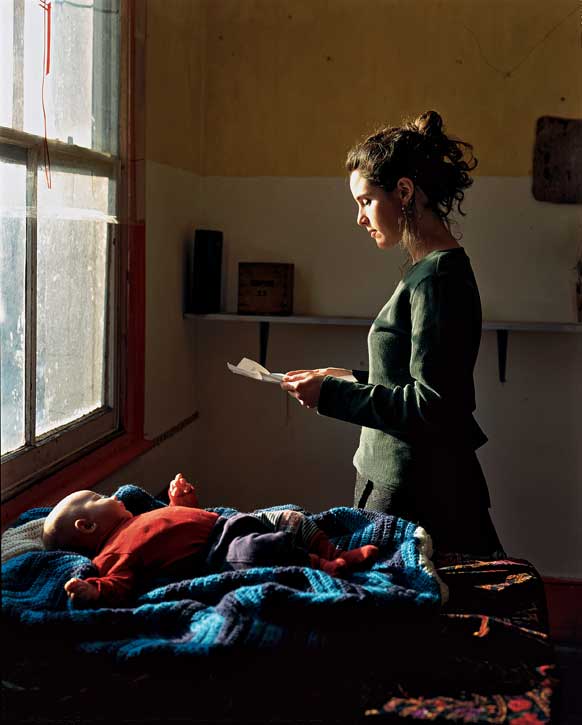
Indicative of the mostly chronological presentation, more than fifty artworks on display reflect thematic influences, ranging from ancient goddess worship to a twenty-first-century pandemic. Curated by Dr Jennifer Sliwka, the exhibition includes examples of painting, sculpture, installation, film and photography.
While the gallery hosts many well-known names from the Western art world, the show also includes artists such as the Cameroonian artist Ajarb Bernard Ategwa, and also encompasses diverse cultural settings, ensuring a more global overview. Similarly, a majority of male artists here, representative of the exclusivity of art history, are joined by the likes of Cindy Sherman and Louise Bourgeois, thus enabling an intriguing comparison of perspectives and an assessment of change.
The exhibition allows visitors to consider the tropes, clichés and subversions in the presentation of the theme, and by doing so, it takes us on a journey through time and locale. We discover that even an enduring framework can be redefined and indeed, reframed. The window, in turn, plays various roles throughout, representative of confinement or a portal of escape, a domestic boundary, or a frame for a fetishised object of display. It facilitates both the act of looking in and looking out, placing the viewer as an intimate insider or conversely as an outsider and voyeur.
While the exhibition does not follow a simple narrative, how women have been framed by men and later reframed by themselves certainly manifests in this visual journey. Particularly considering the painting genre, Rembrandt's Girl at a Window (1645), for example, features an unnamed female subject, who may represent a lover, servant, courtesan or allegorical figure. Her soft rosy features contrast with the grim aperture which confines her.
Is she coyly and invitingly gazing out towards the viewer (deemed a possible act of impropriety), or consumed in her own thoughts? In a work with an air of ambiguity, at the intersection of genre painting and portraiture, the anonymous young subject is perhaps cast as an offering to the viewer's own fantasies.
In reality, the models for such artworks were often derived from the most marginalised communities, including those in extreme poverty and prostitution. Edgar Degas created his work Woman at the Window (1871–1872) by employing a model so desperate, the gallery label informs us, that when paid with a piece of meat, she consumed it instantaneously and raw.
As with Rembrandt's work, the figure presented is unknown. Perhaps significantly, Degas' hazy interior, created with thinned oil paint, positions his female subject with her back against the light provided by a window, thus rendering her in a faceless shadowed profile.
Woman Seated at a Window
1908–1909, oil on canvas by Walter Richard Sickert (1860–1942) 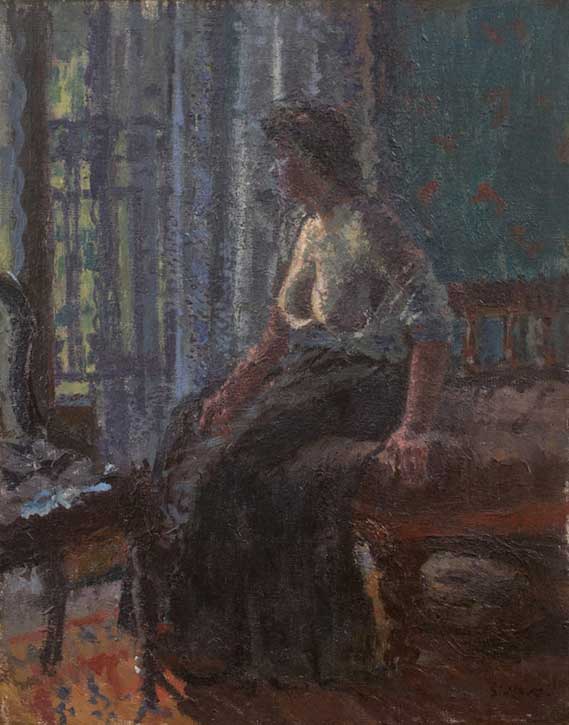
The dichotomy of women represented as either respectably chaste or desirably seductive, both objects of fantasy, is certainly at play here. Degas' friend, fellow painter Walter Sickert's painting Woman Seated at a Window (1908–1909) also depicts a subject in shadow, yet here she is also half undressed. The subject's baring of her breasts, of course, has very different connotations to that of Dirk Bouts the elder's The Virgin and Child (c.1465).
The Virgin and Child
about 1465
Dieric Bouts the elder (c.1415–1475) (studio of) 
While situated in front of a window suggesting a link between heaven and earth, the breastfeeding Madonna's downcast and adoring gaze is an idealised representation of motherhood.
Louise Bourgeois' Blue Sky (1989–2003), which appears later in the exhibition, in turn, wittily reclaims and reframes the breast in the shape of the mountainous view from her window.
My Blue Sky
1989–2003, gouache, watercolour, ink & pencil mounted into a window frame by Louise Bourgeois (1911–2010) 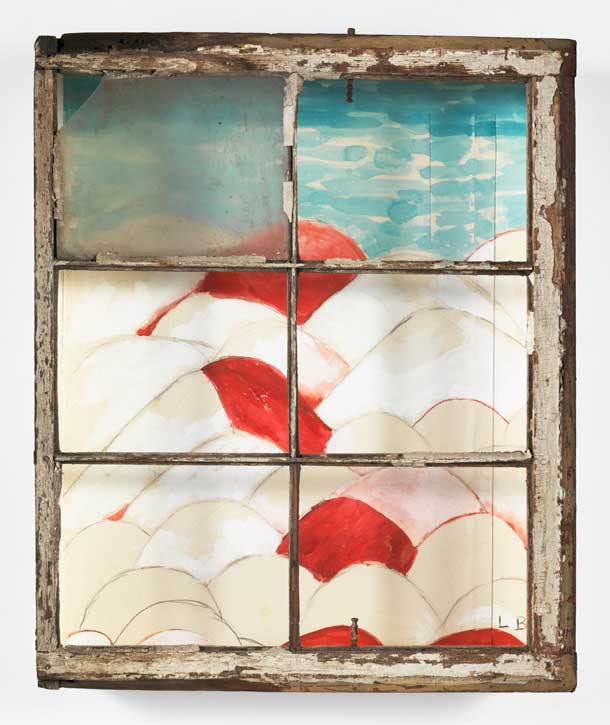
Considering the gaze is pivotal to the exhibition, whether in terms of subject, creator or viewer. Sandro Botticelli's work Portrait of a Lady known as Smeralda Bandinelli (c.1470–1480) unusually challenges conventions for 'respectable' women by allowing his named female subject to have an outward gaze, suggesting the work was created for her husband's eyes only.
Portrait of a Lady
(known as Smeralda Bandinelli) 1470s
Sandro Botticelli (1444/1445–1510) 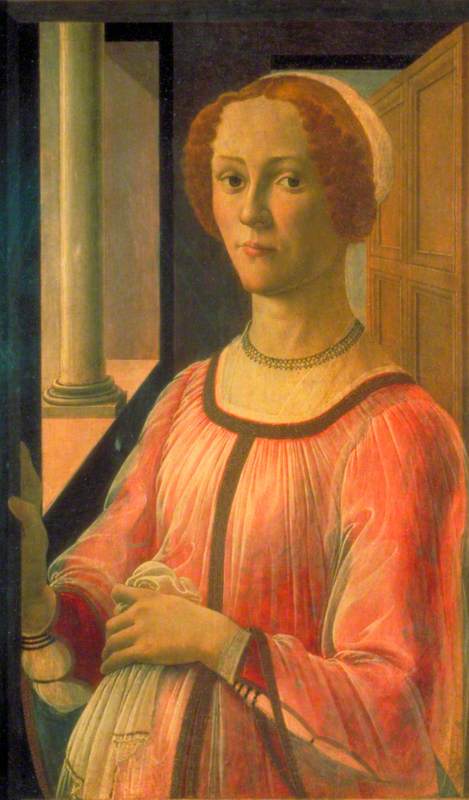
In Gerrit Dou's painting A Woman Playing a Clavichord (c.1665), the composition positions the viewer as perhaps a male lover of the female subject, suggested by the inclusion of symbolic motifs.
Louis Léopold Boilly's painted imitation of a print, A Girl at a Window (after 1799) already plays with the observer's perceptions. While the composition follows a Dutch precedence for framing the subject in a window, his subject's direct gaze and the inclusion of telescopes also tease the viewer by asking 'who is watching who?'
The question of identity is also raised, particularly for such paintings as Woman in a Red Dress, attributed to Gabriel Metsu (1629–1667), which intriguingly presents an unknown Black female subject.
Woman in a Red Dress
c.1660–c.1669
Gabriel Metsu (1629–1667) (attributed to) 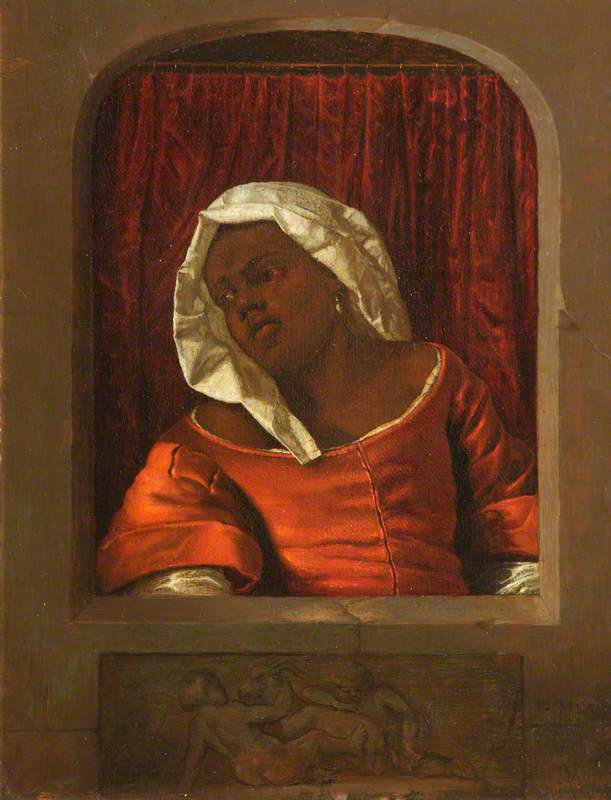
Ategwa's contemporary painting Posing With My Parrot (2021), as with Degas and Sickert's early work, presents another faceless model. However her obscurity is somewhat countered by her opposing representation as a confidently composed and colourfully attired African 'everywoman'.
Posing with my Parrot
2021, acrylic on canvas by Ajarb Bernard Ategwa (b.1988) 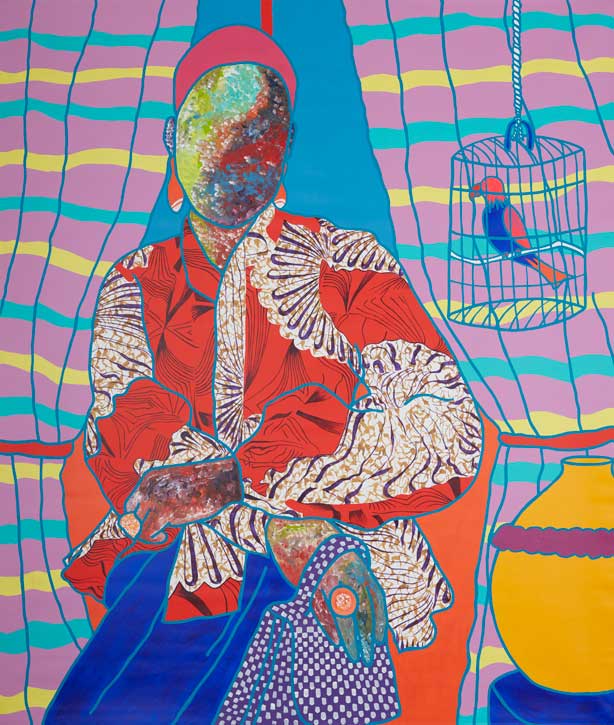
In Albert Joseph Moore's The Mother of Sisera (1861), a subject lacking her own identity, the woman of colour utilised as a model is, however, known. Jamaican-born Londoner Fanny Eaton modelled for a number of nineteenth-century artworks, often utilised, as here, to denote different ethnicities to her own.
As female artists enter the chronology, in conjunction with contemporary male creators, challenges to the frame become more apparent. It is perhaps Isabel Codrington's painting, The Kitchen (1927), however, which is most striking. In a work which immediately unsettles the idea of a blissful domestic interior or playful subject, a foregrounded dead bird and knife on a kitchen table first greet the eye.
Codrington's composition positions the viewer in the midst of an uneasy setting, which opposes Rembrandt's observation of a desired subject-object or Dou's male gaze. The female subject, her back to the viewer, looks out of a window, suggesting ideas of longing or escape, in a significant reframing of perspective.
While there are many more mediums and ideas to explore, by presenting this particular gendered theme in artworks within shifting cultural contexts, both universality of topic and divergence of meaning may be contemplated. This exhibition is intriguingly layered, ultimately placing the onus on the viewer to consider ideas of representation, in addition to the actual art of looking and in doing so, is certainly worthy of a view.
P. L. Henderson, art historian, curator of @womensart1 and author of Unravelling Women's Art (Aurora Metro, 2021)
'Reframed: The Woman in the Window' is on at Dulwich Picture Gallery until 4th September 2022
